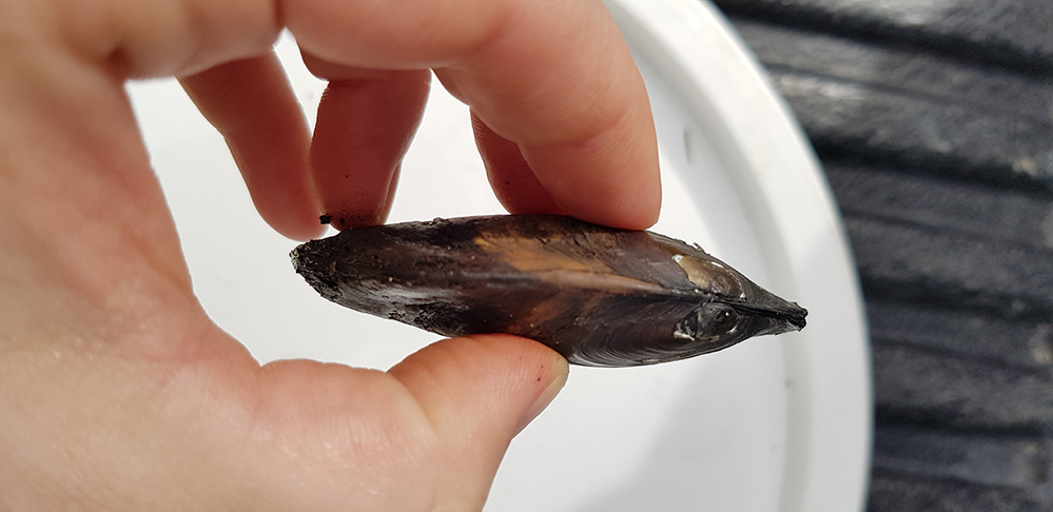Kākahi – freshwater mussels
Kākahi (also known as torewai or kāeo), or freshwater mussels, are amazing creatures. They are a taonga species to Māori and are a vital element within Aotearoa New Zealand’s freshwater ecosystems. They are found in a range of freshwater habitats, from streams to lakes, and are important filter feeders, with each mussel able to filter a litre of water per hour.
Kākahi have a strong foot that they use to “walk”, burrow into sediment, and anchor themselves. It’s often possible to see the tracks of their wanderings on the lake or streambed. A valued mahinga kai species, they were a reliable source of food for Māori – especially in winter – as they don’t move very far.
Their extraordinary lifecycle is dependent on native fish – for part of their life they are fish parasites. Female kākahi keep their microscopic eggs in a gill pouch, where they are fertilised by a male, then develop into larvae called glochidia. The female releases the glochidia when a fish swims nearby. Kōaro, smelt and bullies are key fish hosts for juvenile kākahi. The glochidia hook onto the fins or gills of the fish where they grow into juveniles then detach from their host. This part of their life cycle is still mysterious, but it’s thought the tiny juveniles drift through water and live below the sediment surface until they reach adulthood. At about four years of age they are able to reproduce. Their average life span is 12-30 years, but these fantastic creatures can live as long as 50 or 60 years.
Kākahi face a number of threats including habitat loss, predation by introduced mammals, pollution, and declining fish host populations that are needed to complete their lifecycle.
Kākahi facts
Three species of kākahi live in different regions of Aotearoa:
- Echyridella aucklandica – Threatened – Nationally Vulnerable, present in Te Taitokerau
- Echyridella menziesii – At Risk – Declining, present in Te Taitokerau
- Echyridella onekaka – At Risk – Naturally Uncommon, not known in Te Taitokerau
- Echyridella aucklandica and E. menziesii are sometimes found in the same location
- Life span of 12-30 years, sometimes as long as 50 years
- Often found in undercut banks
 Kakahi bed Photo Ebrahim Hussain Submerged Environmental
Kakahi bed Photo Ebrahim Hussain Submerged Environmental
 Various life stages of kākahi
Various life stages of kākahi
 Viewed through a bathyscope the near vertical line in the sand above the kākahi shows its recent movements
Viewed through a bathyscope the near vertical line in the sand above the kākahi shows its recent movements
 Divers survey kākahi in a Northland dune lake
Divers survey kākahi in a Northland dune lake
 Rat predation as evidenced by the numerous empty shells is a threat to the survival of kākahi populations
Rat predation as evidenced by the numerous empty shells is a threat to the survival of kākahi populations

How you can help
- Report kākahi sightings via our kākahi encounter form here or below
- Undertake predator control
- Support water quality by fencing waterways and riparian planting
- Contact NRC for pest plant control advice around waterways
If you see kākahi
Complete the encounter form below, or call Northland Regional Council on 0800 002 004.
The NRC has statutory obligations to monitor and report on threatened species and to maintain indigenous biodiversity.
Data from reported sightings will help NRC and other agencies to understand the species presence in Te Taitokerau.
Your personal details will not be shared when you report a sighting. No data will be publicly available online.
(Hold tight, we're loading the form).
